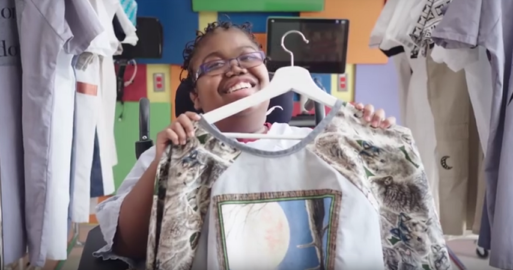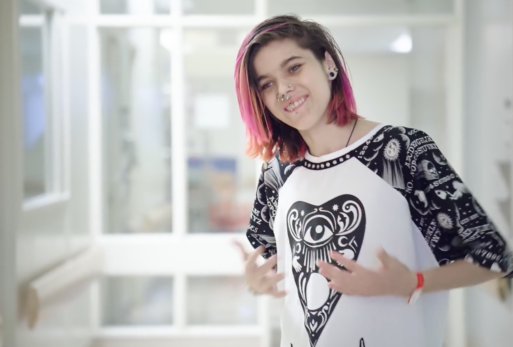
Credit: YouTube
If you find yourself wearing a hospital gown, being fashionable is probably going to be pretty low on your list of priorities. Yet the clothes we wear, including utilitarian outfits like hospital gowns, do have an impact on our mood and even our sense of independence. That’s why many hospitals are hiring fashion experts to perform a complete hospital gown redesign. The idea is that giving patients more freedom of expression may give them a more positive outlook and allow them to heal more quickly.
Last year, The New York Times Magazine commissioned six graphic artists and designers to redesign a number of everyday objects from bicycle locks to toilet seats. One artist, Lucy Jones, decided to focus her efforts on a hospital gown redesign. She wanted to create gowns that would not only look more appealing, but would also be more accommodating to different body types and physical capabilities. Jones has a long history of making stylish clothes for differently-abled bodies. She believes that people who have physical disabilities should still have the freedom to wear fashionable clothes that are also functional.
Jones used this combination of artistry and functionality in her hospital gown redesign. She created two pieces for The New York Times Magazine project, including one gown and one t-shirt and shorts outfit. Rather than leaving the hospital gown open in the back, Jones created a snapping panel in the front of the gown, which unsnaps from the neck to the armpit. She also added a similar panel in the back. With these features, doctors and nurses can still get to different areas of the body quickly, but the patient feels far less exposed.
The materials she chose were also thoughtful. Rather than using the same stiff antibacterial fabric used in most hospital gowns, Jones used Tencel, a soft jersey material that feels supple to the touch and is actually much more absorbent and naturally antibacterial than most jersey fabrics.
Jones also wanted to make her hospital gown redesign feel more like gender-neutral, high-end loungewear. This is where her fashion and art background came into play. The navy blue, almost grey colors that Jones chose are calm and breezy in appearance. And the shapes she used are comfortable for patients and universally flattering to any body type. She wanted to create an outfit that would make patients feel as though they were taking the day off at home wearing just an over-sized t-shirt or pajamas, rather than sitting in a hospital bed awaiting potentially stressful medical procedures.
And Jones isn’t the only fashion designer trying her hand at hospital gown redesign. Another company, Ward+Robes, teamed up with Starlight Children’s Foundation Canada to create fun, brightly-colored hospital gowns for children who have serious illnesses, such as cancer or genetic disorders, that require frequent hospital trips. For children and teenagers in particular, hospital stays can be stressful experiences. In the video below, one patient explains that wearing a hospital gown “makes me feel like my identity’s been stripped away from me.”
To solve this problem, Ward+Robes created dozens of fun, inspiring, fashionable hospital gowns that patients can choose from. By giving them a choice in what they wear, children and teenagers taking part in the program often feel more in control, which can be a powerful quality in a hospital setting.
Wearing the same drab, one-size-fits-all hospital gown for days or even months on end can leave young patients feeling a loss of identity and contribute to feelings of hopelessness and despair. But having the power to make this one small decision and to feel good about what they’re wearing each day may give them a reason to get excited every morning. And that may help them persevere in the face of the hardship they face.

 A Hospital Gown Redesign Empowers Patients Through Fashion
A Hospital Gown Redesign Empowers Patients Through Fashion



 The Other Death in the Family
The Other Death in the Family

 The Healing Sound of Singing Bowls
The Healing Sound of Singing Bowls














